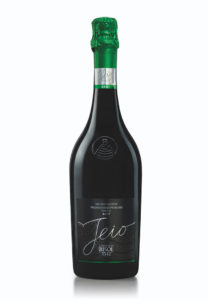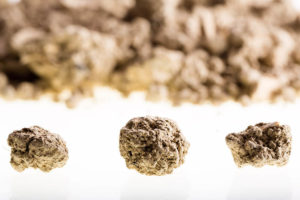Sparkling wine has been a Bisol family tradition since the 1500s
by Tina Silverberg, Corporate Sommelier, Legal Sea Foods
There is nothing more exciting to me than tasting an indigenous grape varietal that truly expresses the terroir of that region, grown on a family-owned vineyard. As I travel to wine-producing regions and meet proprietors and winemakers around the globe, it is these unique opportunities I find to be the most memorable from a sommelier’s perspective. A highlight of my recent trip to Veneto was meeting Gianluca Bisol, and learning first-hand about his family business as well as new endeavors. The winery continues to grow and diversify, while maintaining a legacy of outstanding quality Prosecco production.
Prosecco is different than traditional method sparkling wine, as the Charmat method yields more approachable wines with fresh, fruity flavors intended for immediate consumption rather than long aging periods. In the U.S. market where budget-friendly Prosecco outsells other sparkling wines, the Bisol family’s renowned history of quality production in Valdobbiadene sets them apart from competitors. Bisol’s Prosecco is imbued with the family’s dedication to their small vineyard holdings. Owing to their success, they’ve been able to expand their portfolio to include spectacular top “rive” single-vineyard bottlings of Prosecco. The Bisol family looks to other regions of production around Veneto—specifically Burano and Colli Euganei— in order to craft distinctive wines expressive of these unique soils.

Gianluca Bisol is the 21st-generation grape-grower in his family, an exceptional tradition considering there are very few family-owned producers remaining in the region. I was most interested in learning more about Bisol Prosecco production, as well as meeting the family behind the wine. The Jeio Prosecco DOC has been a consistent blind-tasting winner during our wine selection process at Legal Sea Foods. Crafted by the Bisol family, Jeio honors the nickname of their patriarch, Desiderio. Having poured this Prosecco many times over the last five years, I was thrilled to visit Valdobbiadene and see the vineyards for myself.
The Bisol family uses a total management approach, closely monitoring the quality in their hillside vineyards. Gianluca shared the evolution and characteristics of the Glera grape varietal, as well as more about the specific sites for boutique Prosecco production. The grapes are always hand-picked, as the steep sites do not allow for mechanical harvesting. The family produces a range of DOC and DOCG bottlings, with the latter dedicated to “cru” expressions, which feature a single vineyard or soil type. We visited two of these top rive sites during the trip—Campea and Cartizze—sampling the wines in the vineyard for a deeply personal and unforgettable experience.
The Bisol family has cultivated vines throughout the dynamic hills of Valdobbiadene for generations, with traditions dating back to 1542. Over time, they have become experts of the land, identifying five types of soil throughout the hillsides and enlisting the expertise of a biologist and entomologist in order to meticulously maintain the grapes’ growth cycles. The Bisols have found that subtle terroir differences between hillsides, including aspect and elevation, can contribute significantly to the finished Prosecco, among many other factors. Over time, they have identified certain sites for individual bottlings to fully showcase these differences.

One of my favorite Bisol selections from our tastings with Gianluca included Crede Brut, from a “cru” site dominated by clay soils. This expression offered minerality and a juicy, soft bubble structure, as well as aromas of spiced yellow plum and elegant notes of jasmine and rose. This bottling varied significantly from the round and creamy-textured Relio Rive di Guia Brut, which offered stone fruit flavors of pear and white peach with honeydew, mango, and papaya undertones. Another highlight was the Cartizze Dry, with vibrant pineapple, yellow peach, lemon cookie, and lemongrass notes, and a lively, tart and lingering finish. Bisol’s Cartizze bottling is one of the jewels in their Prosecco line-up, with five acres of this acclaimed site owned by the family since the 1500s.
Bisol has been able to harness the difference in style between Prosecco produced from the Glera grapes using the Charmat method and the autolytic flavor profile of Champagne using the traditional method, and use it to their advantage. Over the last decade, the family has taken measures to experiment with international grape varietals like Chardonnay and Pinot Noir, as well as a second fermentation in-bottle. Down in Bisol’s centuries-old cellars, we were treated to a wine produced from the finest Glera grapes, with a second fermentation in-bottle and aging on the lees for 21 months: Private Cartizze 2014. This mineral-forward sparkling expression features notes of fresh apple and peach tart. The conclusion of 30 years of experimentation, Private Cartizze found its “sweet spot” at 21 months, unlocking its deeper fruity qualities and a bottom note of toast. Not meant to replicate or replace Champagne, Private Cartizze was created with whimsy in mind, to see which styles could be produced from the indigenous Glera grapes. Throughout our exploration of the Veneto, we witnessed the Bisol family’s passion for elevating the indigenous wines of the region.
As we headed towards the city, we learned that the 1966 flooding of Venice ultimately destroyed the region’s agricultural business. This incident, combined with naturally salty soils, made for a challenging grape-cultivating environment. When the Bisol family discovered 88 vines of the thought-to-be-extinct Dorona varietal on the island of Torcello, they decided to experiment. Shortly after, the Venissa Winery & Resort was established in the small fishing island of Burano. The winery, boutique hotel, and Michelin-starred restaurant are run by Mateo Bisol, Gianluca’s son. The first vintage of Venissa Dorona produced was 2010.
The winemaking process involves one month of skin contact, followed by aging in concrete for three years. We tasted two vintages: the 2011 was richer and more mature, showcasing honeycomb, spiced apple, fresh ginger, and dried orange peel flavors with bright salinity. The 2014 was more subtle, with honeysuckle, orange blossom, grilled pineapple, and flinty nuances. Although a relatively new bottling, the Bisol family is confident that the wine will continue to thrive for 20 to 30 years. With a love for the land and interest in reviving agriculture and viticulture in the region, The Wine Resort is a winning concept, and hidden-gem for wine enthusiasts visiting Venice from all over the world.

Another project for the Bisol family is Maeli Wine, in the Colli Euganei region. Winemaker Elisa Dilavanzo leads an all-female team that specializes in exciting expressions of Moscato Giallo, more commonly known as yellow Muscat. Colli Euganei is an ancient volcanic area composed of more than 80 hillsides ranging from 1,000 to 2,000 feet in elevation. Yellow Muscat thrives here, and Elisa and her team craft it into five distinct expressions.
The Traditional Method Brut Nature 2015 ages on its lees for 18 months prior to disgorgement and bottling. The wine showcases notes of honeycomb, wildflowers, and pineapple, with subtle stone fruit flavors, minerality and banana cream on the finish. The Pét-Nat 2016 is crafted in the ancestral method, expressing more yeasty herbal tea aromas as well as apricot blossom, lime leaf, and juicy kiwi. The Fior d’Arancio 2015 is a still, dry expression of the yellow Muscat with notes of mint, pineapple, and Anjou pear, with exquisite layers of mineral essence. The Sparkling Sweet Fior d’Arancio 2016 offers a bouquet of lemon meringue pie, key lime, mandarin orange, honeysuckle, and subtle green herb, and features a creamy, bright texture. Lastly, the Fior D’Arancio Raisin Wine 2015, made from grapes dried for three to four months, was a real show-stopper. Vivid notes of dried tropical fruit, jasmine and beeswax balanced Thai basil and acacia blossom, for a luscious, intense finish.
Cultivating the Moscato Giallo and diversifying the expressions presented a wonderfully fresh outlook on sparkling wine. Having the backing of one of the foremost producers of quality Prosecco allows this boutique outlet to share its wines on the global market, and introduce sparkling wine-lovers to a new discovery category. The passion Elisa and her team bring to the table is undeniable!
Supporting terroir-driven, family-owned wineries is one of the cornerstones of our wine program at Legal Sea Foods. As a family-owned restaurant group, we strive to support and introduce exceptional producers of this nature to our guests. Starting at the end of January, stop into Legal Sea Foods in Massachusetts for a delicious and refreshing glass of Jeio Prosecco DOC. Cheers to 2019!
